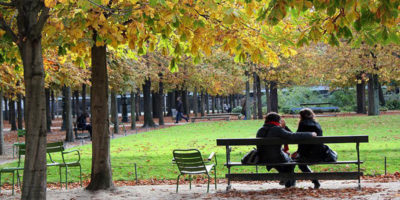
Interior of the Holy Blood Basilica in Bruges. Photo by KL KL. Wikimedia Commons.
Top 10 Incredible Facts about Basilica of the Holy Blood
The Basilica of the Holy Blood is a Roman Catholic basilica in Bruges, Belgium. The church houses a relic of the Holy Blood allegedly collected by Joseph of Arimathea and brought from the Holy Land by Thierry of Alsace, Count of Flanders. Built between 1134 and 1157 as the chapel of the Count of Flanders, it was promoted to a minor basilica in 1923.
The basilica in Burg square consists of a lower and upper chapel. The lower chapel, dedicated to St. Basil the Great, is a dark Romanesque structure that remains virtually unchanged. The venerated Passion relic is in the upper chapel, which was rebuilt in the Gothic style in the 16th century and renovated in the 19th century in Gothic Revival style. Here are the Top 10 Incredible Facts about Basilica of the Holy Blood.
1. The basilica was founded by Thierry of Alsace

Bruges, the Basilica of the Holy Blood. Photo by Dguendel. Wikimedia Commons.
In 1134, Thierry of Alsace decided to build a private double chapel next to the Oud Steen, the first residence of the Counts of Flanders, transformed today into the town hall of Bruges.
Thierry went on crusade a second time in 1147 during the Second Crusade. According to the tradition, Thierry of Alsace returned to his capital Bruges on April 7, 1150, with the relic of the Precious Blood. During the first half of the 13th century, the name of the upper chapel was changed to the Chapel of the Holy Blood.
2. It embodies the Romanesque architectural style
The chapel of Saint Basil is one of the best preserved churches in Romanesque style of West Flanders. The chapel consists of two side naves and a central nave continued by the choir, which in turn is ended by a semi-circular apse. In the tympanum above the entrance linking the chapel and the annex is a 12th-century representation of the baptism of Saint Basil.
The black marble retable is allegedly executed from designs by Lancelot Blondeel. The upper chapel was transformed in Gothic Style at the end of the 15th century and again in 1823. Only the curved arches giving access to the side chapel of the Holy Cross remain from the original Romanesque chapel.
3. The basilica has relics of the Precious Blood
The basilica is best known as the repository of a venerated phial said to contain a cloth with blood of Jesus Christ, brought to the city by Thierry of Alsace after the 12th century Second Crusade.
Although the Bible never mentions Christ’s blood being preserved, Acts of Pilate – one of the apocryphal gospels – relates that Joseph of Arimathea preserved the Precious Blood after he had washed the dead body of Christ; legends of Joseph were popular in the early thirteenth century, connected also with the emerging mythology of the Holy Grail.
4. The Holy Blood was presumably brought to Bruges by the Count of Flanders
The man who commissioned the church, Thierry of Alsace, was the fifteenth Count of Flanders and was a man who was quite fond of invading southern territories. He actively participated in 4 campaigns in the Levant and Africa, including a prominent role in the Second Crusade (1147-1150).
It’s during this campaign that he was awarded the “Relic of the Precious Blood.” This is a bloodstained piece of cloth that was presumably collected by Joseph of Arimathea, the man who buried Jesus Christ following his crucifixion. According to the legend, Thierry of Alsace arrived in Bruges on April 7, 1150, with the Holy Blood in hand and put the relic into his newly constructed church.
5. The blood is carried through the city once a year in a procession

Side Altar where the relic of Holy Blood is presented to the worshippers. Photo by Matt Hopkins. Wikimedia Commons.
The relic has been treated as real by the Roman Catholic church since the Middle Ages. A yearly procession carries the relic around the city, a tradition that started way back in the late 13th century.
This procession with medieval roots takes place once a year in Bruges on Ascension Day, one of the best times of year to visit this fascinating city in Belgium.
6. It is decorated by statutes and medallions
The exterior of the basilica is decorated with gilded bronze statues and medallions. These statues represent Archduchess Isabelle of Burgundy, Mary of Burgundy, Thierry of Alsace, and Philip of Alsace.
The figures featured in the medallions represent Archdukes of Austria Albert VII and Maximilian III, Margaret of York, and Sibylla of Anjou. The latter was the wife of Thierry of Alsace.
7. The basilica’s stained glass depicts leaders of Flanders

Photo by Enrique Matías Sánchez. Wikimedia Commons.
The stained glass windows in the upper chapel were completed in the year 1845 and depict all the people who reigned over the county of Flanders. This ranges from Philip the Bold in the 14th and 15th centuries to Archduchess Maria Theresa of Austria, Holy Roman Empress, in the 18th century.
8. The basilica has undergone many renovations over time
Even though the upper chapel was completed in the 16th century, many additions to the interior were made much later. Some of these include a relief in alabaster depicting the Last Supper dating back to the 17th century and the pulpit in the form of a globe which was completed in 1728.
The painting decorating the wall behind the High Altar is called “The Mystery of the Cross.” It depicts both Bethlehem, the town where Jesus was born, and Jerusalem, the city where he died. This work of art was only completed in 1905.
9. The basilica has two chapels
The Basilica of the Holy Blood consists of two chapels. The lower chapel is also known as the Chapel of Saint Basil, while the upper chapel is known as the Chapel of the Holy Blood.
The Chapel of Saint Basil was built between 1134 and 1149 in the Romanesque style by Thierry of Alsace, the Count of Flanders. According to the basilica’s official website, this chapel is the “only church in Romanesque style of West-Flanders.”
10. It’s located on one of the most important squares in the city

Painting of the Relic of the Holy Blood. Photo by Own Work. Wikimedia Commons.
The Basilica of the Holy Blood is a Roman Catholic church and minor basilica in the city of Bruges in the northwestern part of Belgium. It’s located on one of the most famous squares in the city called “De Burg,” a word referencing its original use as a fortress in the heart of the city.

 English
English











